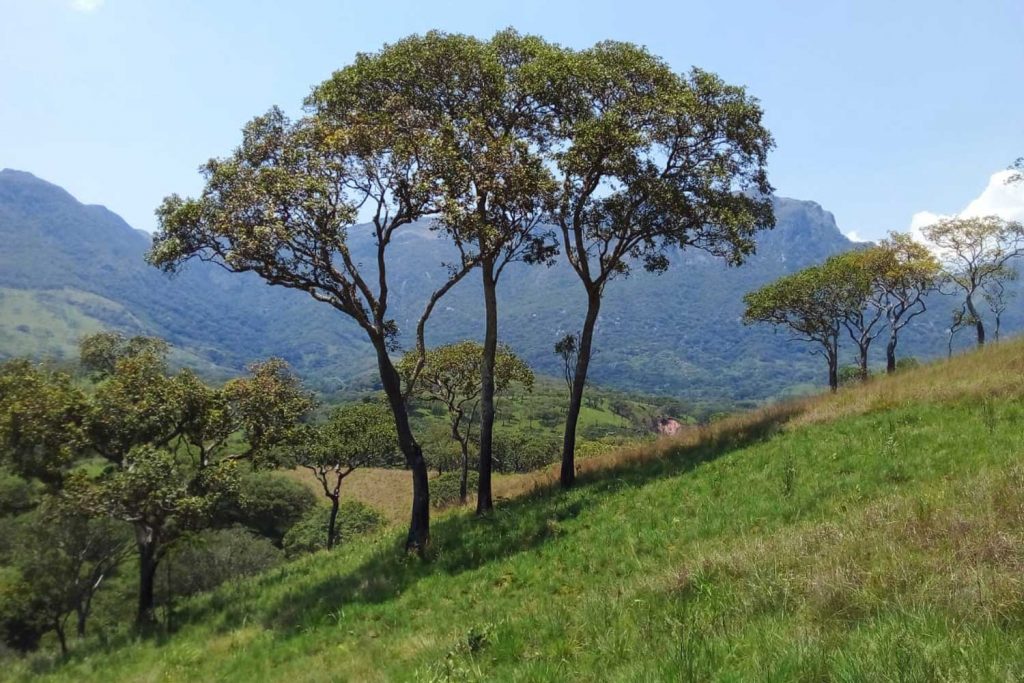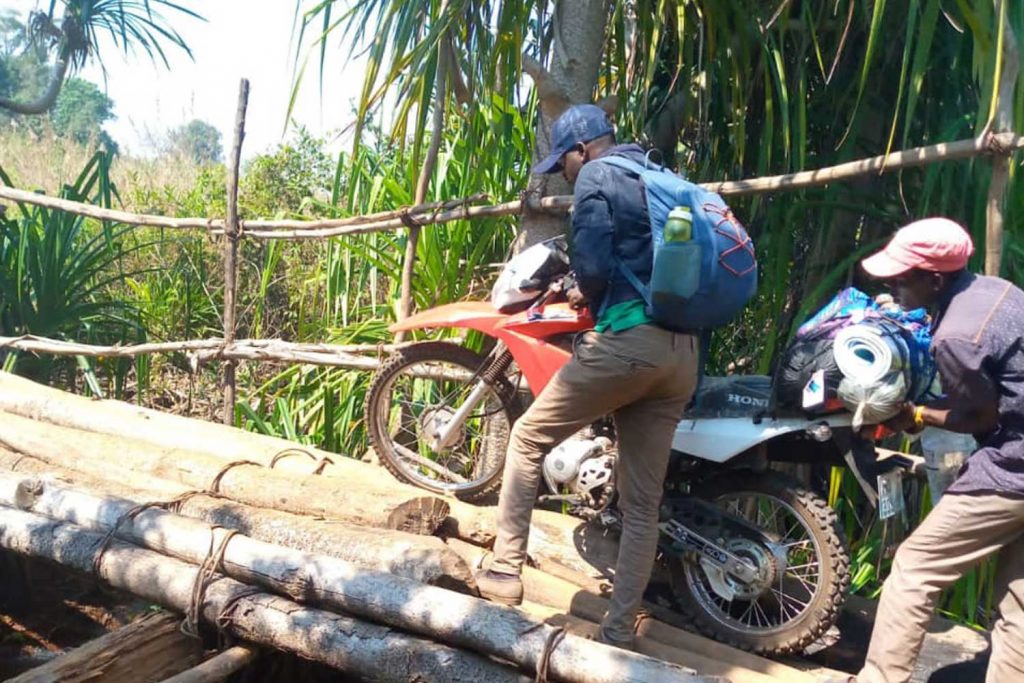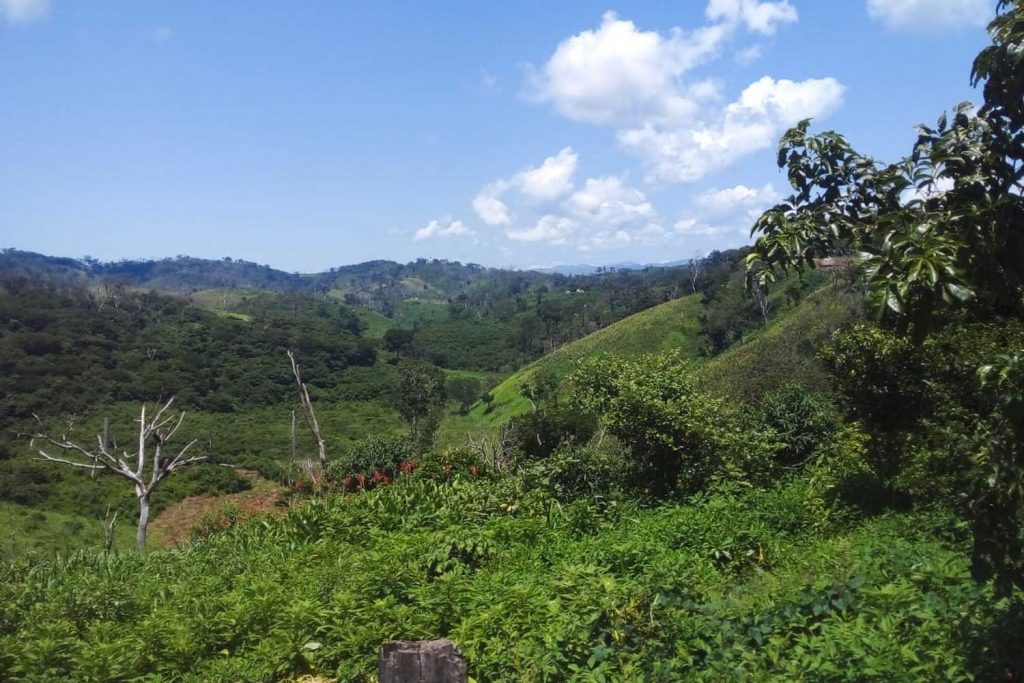A Landscape Approach
Sussundenga District – Chimanimani



Sussundenga District – Chimanimani
Sussundenga District is one of the most fertile and productive in Manica Province, with a mix of investors developing commercial fruit (litchi, citrus), nut (macadamia) and forest (Eucalyptus) plantations. Yet the district is still dominated by smallholder farmers, and with plantations expanding, many of these farming families are forced to move into new areas, including the forests that form part of the buffer zone of the Chimanimani National Park. It is this buffer zone where Micaia has focused most of its efforts in the Sussundenga landscape. We started engaging with communities such as Mpunga, in Moribane Forest, in 2008, and over the years we have worked in all areas of the buffer zone.
The buffer zone of Chimanimani National Park is itself a wonderfully diverse landscape, incorporating rolling grassland hills (Tsetsera), fertile farmland (e.g. Mussapa), miombo woodland, and biodiversity-rich evergreen forest. Sadly, the rich forest areas are being rapidly depleted. A combination of natural population growth, internal migration, and illegal exploitation of resources has led to extensive deforestation, the proliferation of invasive species, and biodiversity loss. In areas in which Micaia has been able to support livelihood activities such as beekeeping, there has been a much lower rate of forest loss. We have enabled more than 1,000 families to enter and scale up beekeeping – and production of comb honey has increased from 3 tons in 2014 to 40 tons in 2020. Money earned has helped people build better houses and to keep children in school longer. We have enabled more than 3,000 families to learn new techniques of sustainable agriculture, and we’ve seen both increasing yields and reduced levels of forest clearing.
Despite the gains, the scale of the challenge – a mix of poverty, population growth, and greed – is still daunting. Yet there are wonderful opportunities for livelihood diversification, especially in non-timber forest products, including honey. If we can combine investment in such economic activities, with continuing support for more effective community management of natural resources, then we still believe that the Chimanimani buffer zone can become a shining example of balancing human livelihoods and well being with effective biodiversity conservation.
Current work
Biodiversity conservation and community development in Chimanimani Conservation Area
This 4-year project (2021-24), is a direct response to the challenges outlined above in that it combines scaled up support for Non-Timber Forest Product (NTFP) livelihood enhancement with work at household and community levels on land and natural resource management. The project is funded by AFD (Agência Francesa de Desenvolvimento) and FFEM (Fonds Français pour l’Environnement Mondial). Partners in the project include BIOFUND (Foundation for Biodiversity Conservation) and FFI (Fauna and Flora International). The project aims to promote sustainable environmental management in the Chimanimani Conservation Area (ACC). At the level of the Chimanimani National Park, the project supports the conservation and enhancement of the natural and cultural heritage; in the buffer zone, the project will support the sustainable management of natural resources for the benefit of local communities.
The project consists of four operational components and a support component for project management. The first component, “Heritage”, aims to improve knowledge of and to protect the ACC’s natural and cultural heritage. Micaia Foundation is implementing Components 2 and 3. Component 2 provides for the strengthening of land rights for local communities, as a prerequisite for better management of land and natural resources. Component 3 focuses on improving livelihoods based on non-timber forest products (NTFP). Component 4 will seek to accompany national authorities in pilot tests for the preparation of two innovative financing mechanisms for biodiversity conservation.
Land and natural resource management
Component 2 involves the delimitation of community lands at the level of families, and the development of Sustainable Territorial Management Plans. Using an approach pioneered by Terra Firma, families and local facilitators will map all family land and a locally established Community Association (set up in the project) will award land ‘certificates’ to each family. The details of every family land holding will be lodged in an online platform linked to the growing national Cadaste Popular. While these certificates and the registration of land falls short of the current official titling of land, the approach uses existing laws to provide ample protection of family land. The project aims to enable every family across the buffer zone to have their land secured in this way.
Non-timber forest product livelihoods
Since 2016, Micaia has led the transformation of beekeeping in Chimanimani, turning a largely informal and small scale value chain into one of Mozambique’s leading centres of honey production. The quality of beekeeping and honey has improved immeasurably, and there are now more than 800 beekeepers managing between them, xxxxx top bar beehives. The focus of this new phase of work is the further professionalization of beekeeping, with the aim of increasing the tonnage placed on the market and increasing the income of local communities. The Mozambique Honey Company (MHC) works mostly through a network of 80 ‘Lead Beekeepers’, more experienced and committed beekeepers who earn a premium for supporting other beekeepers in their village or area. Micaia is focusing on these Lead Beekeepers, training and supporting them to not only improve their beekeeping, but also to better manage their activity as a small business. The project will also invest in infrastructure such as honey collection centres where MHC can meet and buy from beekeepers, and we will establish and support the development of the Chimanimani Beekeepers Association. The project will also seek to expand NTFP livelihoods beyond honey. The buffer zone is rich in medicinal plants, native species of fruit, plants that are suited to producing extracts or essential oils, others than provide seed oils for cosmetic use, and wild mushrooms. The aim is to establish at least two NTFP value chains accompanied by resource management plans to ensure against over-exploitation. The initial phase of activity is to identify potential species and gain an understanding of abundance and current use, consulting with local herbalists and external specialists. Mapping local potential with market research and technical feasibility studies will lead to selection of priority species for commercialization. The project will support training of community members in wild harvesting and various forms of pre-processing and will set up a community based Natural Products Centre.Past activities
MozBio (2016-2020)
Funded by the World Bank via ANAC, MozBio supported the Chimanimani National Park and its buffer zone. Micaia led work in the buffer zone, implementing three large-scale sub-projects: beekeeping, sustainable agriculture, and commercial agriculture. The beekeeping sub-project enabled 867 people to gain a better level of technical skills for beekeeping and invested in 4,935 beehives. Production of comb honey reached 28 tons in 2018 (up from 5 tons in 2016) before being set back by Cyclone Idai in 2019. Production recovered to 33 tons in 2020. Work on sustainable agriculture enabled 1,171 farming families to learn techniques such as mulching, companion planting and agro-forestry, to improve quality and gain more productivity from available land. The commercial agriculture sub-project supported 372 farmers to better aggregate their crops (including in warehouses built in the project) and build strong market linkages.
Idai response (2019-2020)
Cyclone Idai devastated many areas of the Chimanimani buffer zone, killing at least 150 people, washing away whole villages, and destroying forest areas and farmland alike. Micaia mobilized quickly, deploying staff members and available funds to provide immediate food aid. With support from a UK funding partner, Micaia in time reached more than 3,000 families with various forms of assistance: food, clothes, tools and seeds for planting. With support from MozBio, we were able to help 3,000 farmers re-establish their farms and 300 beekeepers replace their lost beehives.
ROAM (2018)
Mapping of degraded areas, prioritization of interventions, and definition of restoration models in the District of Sussundenga (Manica Province), with focus on the Chimanimani National Reserve and its buffer zone. Funded by the World Bank, this work was led by Eco-Micaia and its partners from Brazil, LERF – Laboratório de Ecologia e Restauração Florestal da Escola Superior de Agricultura Luiz de Queiroz (ESALQ) Universidade de São Paulo (USP).
Balancing Conservation and Livelihoods in the Chimanimani Forest Belt (2014-2017)
Funded by the Darwin project (Department for International Development and DEFRA, UK), and implemented in partnership with the Royal Botanical Gardens, Kew, this project in many ways laid the foundations for Micaia’s current work. It supported the identification, mapping and initial community commitment to four Community Conservation Areas. It expanded the number of people involved in beekeeping and boosted production of honey to 5 tons/year. Botanical surveys provided a detailed database of ‘useful’ plants for potential commercialization.
Testing approaches to REDD+ (TREDD) (2014-2017)
Sustainable Management of Natural Resources through expansion on NTFP livelihoods. Funded via the International Institute for International Development in the UK (IIED), the project was an important early contributor to strengthening the honey value chain in Chimanimani, training beekeepers and establishing the Chimanimani Beekeepers Association.
Critical Ecosystem Partnership Fund (CEPF) (2013-2015)
CEPF funded Micaia in partnership with the Royal Botanic Gardens at Key to plan, prepare and carry out a botanical survey and inventory of the Mozambique portion of the upland Chimanimani area, with a specific focus on the quartzite grasslands and scrublands and on those species of restricted distribution (mostly endemics and near-endemics). The surveys greatly expanded the knowledge and collections relating to botanical species in the area.
